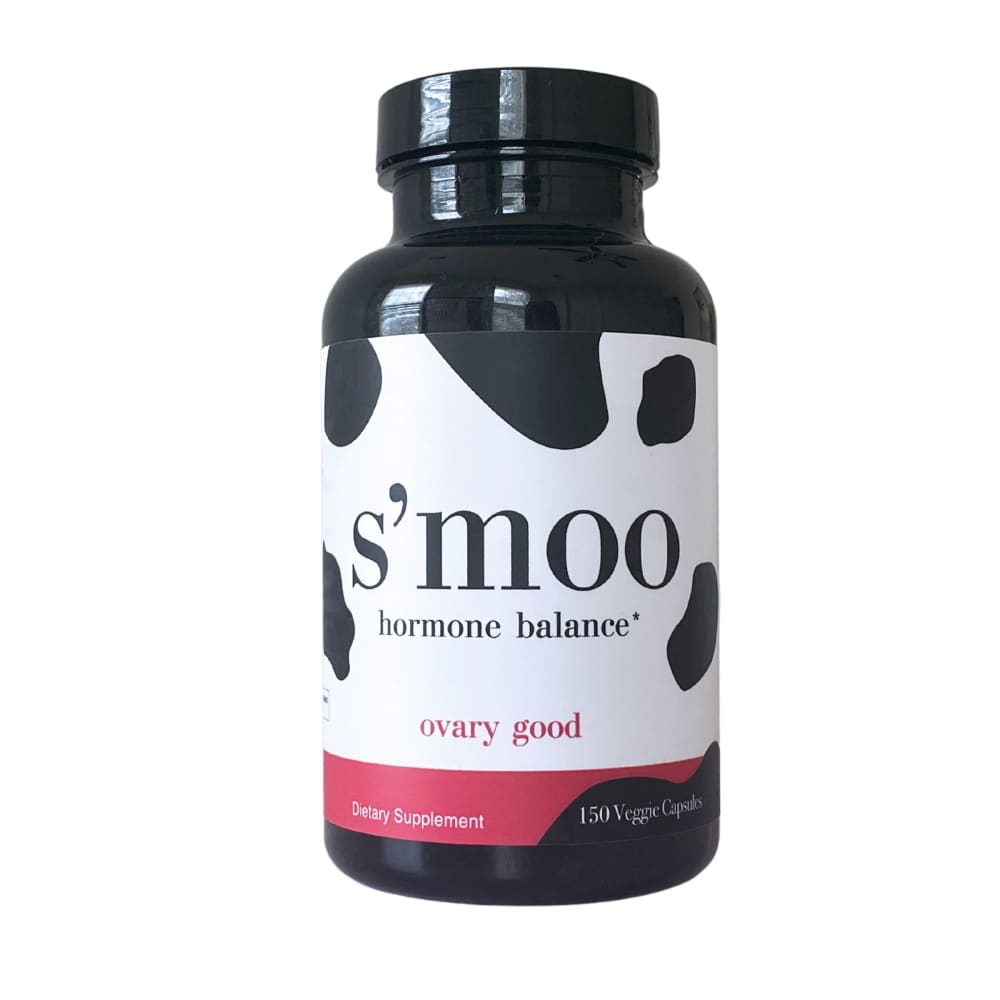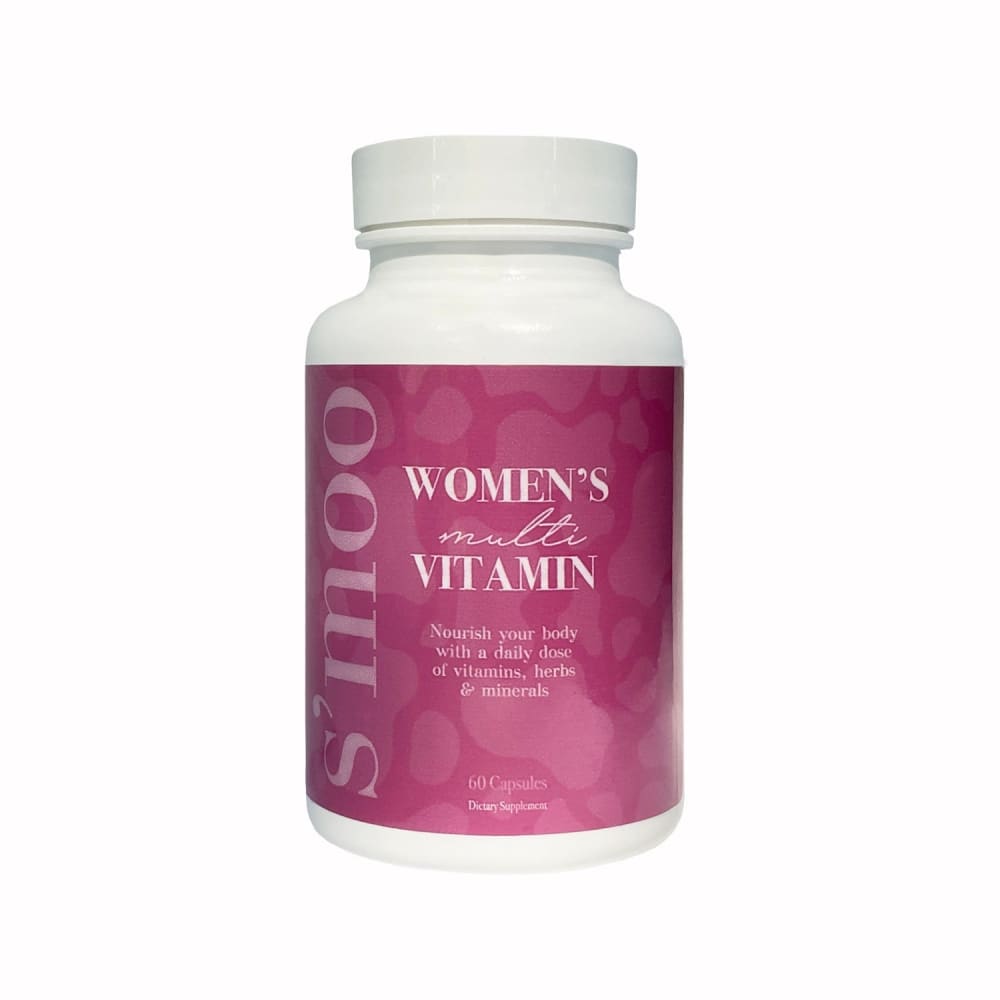The Ultimate Guide To Cycle Syncing: How To Make Your Life Easier
You’re going places in life. On Thursday, you’re going into the office to get face-to-face with your team – you’ve already rehearsed your next-quarter-pep-talk in front of the mirror twice. Next week, you’re going to a friend’s wedding in the desert.
But then – SMACK! Your period hits on Thursday morning. Between the cramps and low back pain, you can’t imagine standing before a crowd of peers and passing out high fives.
Girl, you are not going into the office. It’s a work-from-home day.
Wouldn’t it be nice if your menstrual cycle wasn’t constantly sneaking up on you? It’s like your hormones are taking you on a wild ride you’ll never get off. (Hint: There’s a reason they call it a cycle!)
There is a way to get control of your hormones to be the boss of your body. It’s called cycle syncing.
No, this isn’t a ploy to get everyone in your office to bleed on the same day. Cycle syncing is a way to predict your hormone patterns and plan your life accordingly.
In this guide, we share how cycle syncing works and how you can use it to your advantage to make your hormones work for you.

Understanding the Menstrual Cycle
Your menstrual cycle revolves around an egg. Throughout your cycle, hormones rise and fall to nurture and release the egg to be fertilized.
Month after month, your hormones follow patterns to reach an ultimate goal: preparing you for pregnancy. Even if it’s not on your agenda. Kinda wild, right?
In a perfect world, your hormones would be balanced, working in tandem to do their jobs. But for many people, this isn’t the case. Imbalanced hormones can cause problems like irregular periods, heavy bleeding, or intense PMS symptoms.
Even if you’re one of the lucky ones with a predictable cycle, you still experience hormonal ebbs and flows. With cycle syncing, you predict how your hormone changes will make you feel throughout the month.
You can start mastering your hormones by first getting to know the different phases of your cycle.
The Phases of Your Menstrual Cycle
The first half of your menstrual cycle is the buildup to ovulation, or when the egg is released. The second half depends on what happens to the egg. If it isn’t fertilized, you’ll get a period. If it is, your body will keep making hormones to support a pregnancy.
There are four main phases of the menstrual cycle: [1]
- Menstrual: Day one of your period is when your menstrual cycle begins.
- Follicular: The egg follicle nourishes the egg to maturity before it’s released during ovulation.
- Ovulatory: The egg is released to be fertilized. The days leading up to ovulation and the day after make up your fertile window.
- Luteal: The window after ovulation until your next period. If you get a period, you may experience PMS symptoms in the late luteal phase.
How Hormone and Mood Change Throughout the Menstrual Cycle
In the first half of your menstrual cycle, estrogen plays a major role in ovulation. In the second half, progesterone helps you get and stay pregnant.
Hormonal waxing and waning affect your mood and energy levels. When estrogen levels are high, you feel the most energetic. When they drop off, you may feel tired or gloomy. Progesterone is the highest between ovulation and your period, and it’s the hormone responsible for PMS symptoms like mood swings and anxiety.
Here’s a breakdown of how hormonal fluctuations affect your mood and energy: [2]
-
Menstruation: When you get your period, both estrogen and progesterone are low. Your mood and energy may be down, too. If you feel like hiding under an oversized hoodie for 3-5 days, it’s justified.
-
Follicular phase: Estrogen starts to rise. Your energy increases and you begin to feel more optimistic. This is a good time to add some cardio to your routine or start planning projects at work.
-
Ovulation: Estrogen peaks. You’ll feel your most energetic and sexually aroused. Your confidence also peaks, so it’s a great time to be in front of others. If you’re trying for a baby, now’s the time to plan a romantic night with your partner.
- Luteal phase: Progesterone is high and estrogen is low. Your mood can take an abrupt turn from excited to edgy. Increased progesterone causes PMS symptoms like breast tenderness, bloating, and mood swings.
How to Plan Your Life Around Your Menstrual Cycle
Now that you have an idea of how your hormones affect the way you feel, you can start planning your life accordingly. Cycle syncing isn’t about letting your menstrual cycle control you. It’s about knowing your body’s patterns and moving in flow with your hormones.
Cycle syncing helps you decide the best time to plan certain events. One-on-one with your boss’s boss? Schedule it when you’re feeling confident, like the ovulatory phase. Virtual training session? Complete it on a WFH day, like in the late luteal or menstrual phase.
Some things at work can’t wait, and it’s challenging to plan commitments around your menstrual cycle. That’s why it helps to know where you are in your cycle so you can make adjustments as your hormones change. Here’s how to use cycle syncing on a day-to-day basis as you notice hormone shifts.
Choose the Right Foods and Exercise for Your Cycle
Maybe you’ve heard of seed cycling — a method of naturally balancing your hormones with nuts and seeds. During the first half of your cycle, experts recommend eating flax and pumpkin seeds. In the second half, eat foods rich in zinc and vitamin E like sesame and sunflower seeds.[3]
Think of cycle syncing as being kinda like an expansion of seed cycling. This guide shows you foods to add for each phase to help regulate your hormones and have a better cycle.
Menstruation
During the menstrual cycle, nourish your body with nutrient-dense foods to recover from bleeding.
Give yourself permission to eat hearty, healthy comfort foods. Focus on replacing mineral losses from your period like iron and magnesium. Those satisfying whole grains and healthy starches are your friends.
Foods to eat:
- Quinoa
- Lentils
- Beets
- Pumpkin seeds
- Sweet potatoes
- Kale
- Eggs
- Lean beef
- Chicken
Exercise tips: During your period, all you want to do is curl up on the couch, but light exercise is beneficial when you’re menstruating. Take a yoga class or go for a light walk to get your blood flowing. Remember to stay well-hydrated to make up for losing some blood.
Follicular Phase
As estrogen begins to pick up, you start getting more energy. Nourish your body with lean proteins and light, fresh veggies during this phase.
Foods to eat:
- Brown rice
- Avocados
- Peas
- Broccoli
- Black-eyed peas
- Salads
- Chicken
- Tofu
- Salmon
Exercise tips: As your energy increases, you’re ready to get active again. Get out for a run or join a friend for a dance class, and remember to fuel your body with complex carbs if you’re working out.
Ovulation
Estrogen is at its peak during ovulation. A good rule of thumb is to stick to a heart-healthy diet during ovulation. This supports a healthy liver, which clears extra estrogen. Now is the time to think of eating antioxidant-rich foods and lean proteins.
Foods to eat:
- Sesame seeds
- Sunflower seeds
- Eggs
- Quinoa
- Spinach
- Radishes
- Onions
- Garlic
- Citrus fruits
- Fish
Exercise tips: The ovulatory phase is a good time to take a high-intensity workout class while your energy levels are up. Can’t make it to the gym? Catch yourself dancing around the kitchen to “Piece of Me” in your socks and undies. Either way, get moving!
Luteal Phase
In the luteal phase, you may notice more cravings with PMS, but try to combat sugar cravings with healthy sweets, like dark chocolate or fresh berries. Add foods with magnesium and B vitamins into your diet as you prepare for menstruation.
Foods to eat:
- Cauliflower
- Raspberries
- Pineapple
- Peach
- Apples
- Walnuts
- Eggs
- Salmon
Exercise tips: As your hormones begin to drop and PMS symptoms creep in, be kind to your body. The luteal phase is a good time to take a low-impact class like barre or pilates.
Start Cycle Syncing Now
How do you start cycle syncing? The first step is knowing your menstrual cycle. You can use an app or calendar to track your cycle and get to know your body’s trends.
If you have an irregular menstrual cycle, taking daily supplements may help with cycle syncing.
S’moo Ovary Good is the #1 best-selling hormone-balancing supplement. Its all-natural blend has helped women overcome hormone challenges related to menopause, PMS, PCOS, and more.*
Cycle syncing helps you to get in flow with your hormones to navigate your menstrual cycle. Whether your cycle is regular or irregular, cycle syncing puts you in the driver’s seat. So go ahead and put down the window and blast some Britney — because girl, you have places to be.
*Claims are based on S’moo customer success stories. Everyone’s body is different, so talk to your doctor about whether daily supplements are right for you. This is not medical advice.
Sources:
- What Happens to the Body During Each Phase of the Menstrual Cycle?
- What causes mood swings in females?
- Health Debunked: What Is Seed Cycling, and Is It Effective?
By Alexa Davidson, MSN, RN
Alexa is a registered nurse and freelance health writer. As a nurse, she spent over a decade taking care of sick babies in neonatal and pediatric cardiac intensive care units.
After earning a master’s degree in nursing education, Alexa began teaching associate degree nursing students. Now she’s teaching everyday readers about their health through copywriting.
Alexa believes health information should be accessible to anyone. She’s focused on writing approachable content that empowers women to take control of their reproductive health.
As an emerging FemTech copywriter, Alexa’s work is featured on product blogs like the Inito Fertility Monitor. She’s also a nurse writer and subject matter expert at NurseJournal, Working Nurse Magazine, and Indeed.
When she’s not writing, Alexa is probably in the kitchen. Her specialty is making healthy versions of comfort foods. Black bean brownies, anyone?










